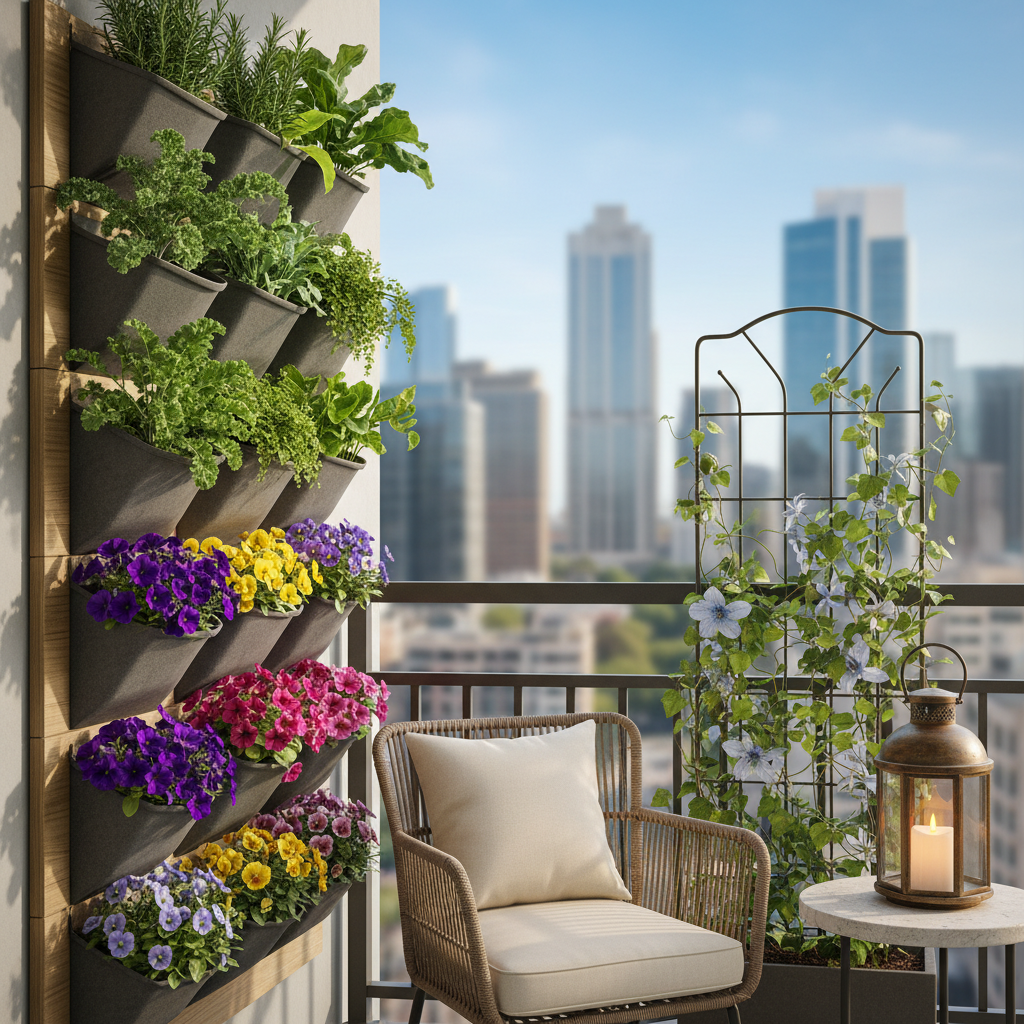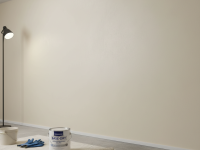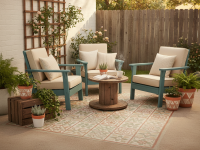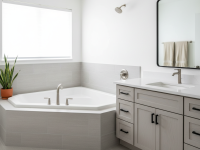Ever gazed at your small urban balcony and wished for a splash of green, a mini oasis away from the city hustle? Let’s be honest, most of us city dwellers are constantly craving more nature, but space is always the ultimate luxury. That’s where vertical gardens come into play – they’re not just a trend; they’re a brilliant, space-saving solution to bring lush greenery, fresh herbs, or vibrant flowers right to your doorstep. And guess what? You don’t need a sprawling backyard to make it happen. Your tiny balcony is the perfect canvas!
I remember when I first moved into my apartment with its modest balcony. It felt like an afterthought, a concrete slab with nowhere to go. But I was determined to make it more than just a place to store my recycling bin. I wanted a haven, a little slice of tranquility. That’s when I discovered the magic of going vertical. It completely transformed my perception of what a small space could achieve. If I can do it, you absolutely can too. So, let’s dive into how you can turn your urban balcony into a thriving vertical paradise.
Why Go Vertical on Your Balcony? It’s More Than Just Pretty Plants!
Before we get into the “how-to,” let’s chat about the “why.” You might think it’s just about aesthetics, but vertical gardening offers so much more, especially for us urbanites with limited square footage. Trust me, the benefits extend far beyond just looking good:
- Maximize Every Inch: This is the big one! Vertical gardens allow you to grow a surprising amount of greenery in a footprint you might have thought was too small. You’re utilizing wall space, which is often completely unused.
- Boost Your Mood & Well-being: There’s a proven link betweeature and mental health. Having plants nearby can reduce stress, improve focus, and generally make you feel happier. My balcony truly became my sanctuary.
- Enjoy Fresh Produce: Imagine stepping out onto your balcony and plucking fresh basil for your pasta, or crisp lettuce for your salad. Vertical gardens are perfect for herbs, leafy greens, and even some small fruits like strawberries.
- Improve Air Quality: Plants are natural air purifiers. While a small balcony garden won’t filter all city air, it will definitely contribute to a fresher microclimate around your living space.
- Aesthetic Appeal: Okay, yes, they do look amazing! A lush green wall can turn a drab balcony into a stuing focal point, increasing your home’s curb appeal and making your outdoor space feel much more inviting.
- Sound & Privacy Buffer: A dense vertical garden can slightly muffle city noise and provide a natural screen from curious neighbors, giving you a bit more privacy.
Choosing the Right Vertical Garden System for Your Balcony
This is where the fun really begins! There are so many fantastic systems out there, and the best one for you will depend on your budget, your DIY skills, and the specific vibe you’re going for. I’ve tried a few different approaches, and each has its pros and cons:
1. Pocket Planters & Fabric Walls
These are super popular for a reason! They’re essentially fabric pockets (often made from recycled materials) that you hang directly on your wall or railing. They come in various sizes and configurations.
My experience: I started with a simple fabric pocket system. It was incredibly easy to install, lightweight, and perfect for herbs and small flowers. Just make sure the material is durable and has good drainage.
- Pros: Affordable, easy to install, lightweight, great for rental properties (easy to remove).
- Cons: Can dry out quickly, some cheaper materials might degrade faster, drainage needs careful management to avoid drips on your neighbors below.
2. Modular Panel Systems
These are more structured systems, often made from plastic or metal, where individual pots or trays clip into a frame. They offer a more uniform and sleek look.
My experience: I upgraded to a modular system for a more “permanent” feel. It allowed for better water distribution and looked incredibly clean and modern. Great for a variety of plants.
- Pros: Excellent drainage, often have built-in irrigation options, durable, customizable layouts.
- Cons: Can be more expensive, heavier, might require more secure mounting.
3. Pallet Gardens & Repurposed Materials
Feeling crafty? A wooden pallet can be transformed into a fantastic vertical planter with a bit of DIY effort. You can also use old rain gutters, plastic bottles, or even shoe organizers.
My experience: I once saw a neighbor use old wooden crates stacked creatively – it looked rustic and charming. My own DIY attempt with a pallet was surprisingly rewarding, though it took some elbow grease.
- Pros: Inexpensive (sometimes free!), environmentally friendly, unique and personalized.
- Cons: Requires DIY skills, can be heavy, potential for splinters or sharp edges if not properly prepped, might need weatherproofing.
4. Trellises & Grids with Climbing Plants
If you love the idea of flowering vines or climbing vegetables, a simple trellis attached to your wall or railing is perfect. Think clematis, morning glories, small cucumbers, or even pole beans.
My experience: I have a small trellis for my jasmine plant, and when it blooms, the fragrance fills the entire balcony. It’s truly magical and requires minimal floor space.
- Pros: Creates a living wall quickly, supports beautiful climbing plants, relatively inexpensive.
- Cons: Limited to climbing plant types, plants might outgrow the space if not pruned.
5. Tiered Planters & Shelving Units
While not strictly “vertical” in the wall-mounted sense, tiered planters or narrow shelving units offer a great way to go upwards. These free-standing units are fantastic if you can’t drill into walls or prefer flexibility.
My experience: I use a slim, three-tiered plant stand for my succulents and smaller herbs. It keeps them off the ground and adds dimension without blocking the view.
- Pros: No drilling required, easy to move, good for a mix of plant sizes.
- Cons: Takes up a small amount of floor space, might be less stable in strong winds.
Picking the Perfect Plants for Your Balcony Vertical Garden
Now that you’ve got your system in mind, let’s talk about what to put in it! Not all plants are suited for vertical living or the unique conditions of a balcony. Here’s what I’ve found thrives:
- Herbs: Basil, mint, chives, thyme, oregano, parsley, rosemary. These are absolute champions for vertical gardens and give you fresh ingredients all the time!
- Leafy Greens: Lettuce (especially loose-leaf varieties), spinach, Swiss chard. You can harvest leaves as needed, and they often regrow.
- Strawberries: They love to trail and are perfect for pockets or edges of modular systems. Plus, fresh strawberries from your balcony? Yes, please!
- Small Flowers: Pansies, violas, petunias, nasturtiums (edible!), marigolds. They add a pop of color and often attract pollinators.
- Succulents & Cacti: If your balcony gets a lot of sun and you want something low-maintenance, succulents are fantastic for vertical displays, especially in shallower pockets.
- Climbing Veggies (for trellises): Cherry tomatoes (bush varieties, or dwarf climbers), small cucumbers, dwarf beans.
Pro Tip: Always consider your balcony’s sun exposure. Does it get full sun all day (south-facing), partial sun (east/west), or mostly shade (north-facing)? Match your plant choices to these conditions.
Balcony-Specific Considerations: Don’t Forget the Details!
Your balcony isn’t a backyard, so there are a few extra things to think about to ensure your vertical garden thrives without causing problems.
- Weight Matters: Soil, water, and plants can get heavy! Always check your balcony’s weight limits and ensure your chosen system is securely mounted and won’t put undue stress on the structure. If you’re unsure, opt for lighter fabric systems or consult your building management.
- Watering & Drainage: This is CRITICAL. Vertical gardens can dry out quickly, especially in fabric pockets. Plan for efficient watering – a small drip irrigation system can be a lifesaver, or be prepared for regular hand watering. More importantly, manage drainage. You absolutely do not want water dripping onto your downstairs neighbor’s balcony. Many modular systems have built-in catch trays, but for DIY or pocket systems, you might need to add trays or ensure plants are watered carefully.
- Wind Exposure: Balconies can be surprisingly windy. Choose sturdy systems and consider plants that can withstand gusts. Secure everything properly to prevent planters from blowing away.
- Sun & Shade: As mentioned, this dictates plant choice. But also, consider how the sun moves across your balcony throughout the day. The top rows of a vertical garden might get more sun than the bottom.
- Building Regulations: Briefly check if your apartment complex has any rules about hanging things on railings or drilling into walls. Better safe than sorry!
Setting Up Your Vertical Garden: A Path to Green Success
Okay, let’s get down to business. Here’s a simplified version of my process:
- Assess Your Space: Seriously, stand on your balcony and observe. Where does the sun hit? How much space do you truly have? Take photos and measurements.
- Choose Your System & Plants: Based on your assessment and the options above, pick what feels right for you. Start small if you’re new to this!
- Gather Your Supplies: Your chosen vertical garden system, high-quality potting mix (lightweight is often best for balconies), your plants, small trowel, watering can/drip system, gloves.
- Prepare Your System: If it’s a DIY system, assemble and prepare it. For fabric pockets or modular units, get them ready for soil.
- Planting Time: Fill your chosen pockets/containers with potting mix. Gently remove plants from their nursery pots and plant them in your vertical garden. Don’t overcrowd them.
- Installation & Watering: Securely mount your vertical garden system. Water your newly planted garden thoroughly. For the first few weeks, keep an extra close eye on moisture levels.
Maintenance for a Thriving Vertical Oasis
Just like any garden, a vertical gardeeeds a little love and attention to flourish. Here’s what I’ve learned helps:
- Consistent Watering: This is probably the most important. Vertical gardens, especially those exposed to sun and wind, dry out faster than traditional pots. Check soil moisture daily, especially during hot spells. Consider a self-watering system if you’re often away or forgetful.
- Feeding Your Plants: With limited soil volume, nutrients get depleted quickly. I use a diluted liquid fertilizer every 2-4 weeks during the growing season.
- Pest Watch: Keep an eye out for common balcony pests like aphids or spider mites. A simple spray of neem oil or insecticidal soap can usually handle them.
- Pruning & Harvesting: Regularly snip off spent flowers, yellowing leaves, or leggy growth. For herbs and greens, harvest frequently to encourage new growth.
- Rotation (if possible): If some areas of your garden get more sun than others, occasionally rotate pots or even the entire system (if it’s modular) to give all plants a fair share.
Your Balcony, Your Green Dream
Creating a vertical garden on your urban balcony is more than just growing plants; it’s about reclaiming a piece of nature for yourself, enhancing your living space, and adding a touch of personal artistry to your home. It’s an incredibly rewarding experience, watching tiny seedlings grow into a lush wall of green, all within the confines of your city apartment.
Don’t be intimidated by the small space. Embrace the challenge, start with a simple system and a few easy-to-grow plants, and let your creativity bloom. Before you know it, that overlooked concrete slab will be your favorite spot to relax, sip your coffee, and breathe a little bit easier amidst the urban jungle. Happy gardening!




